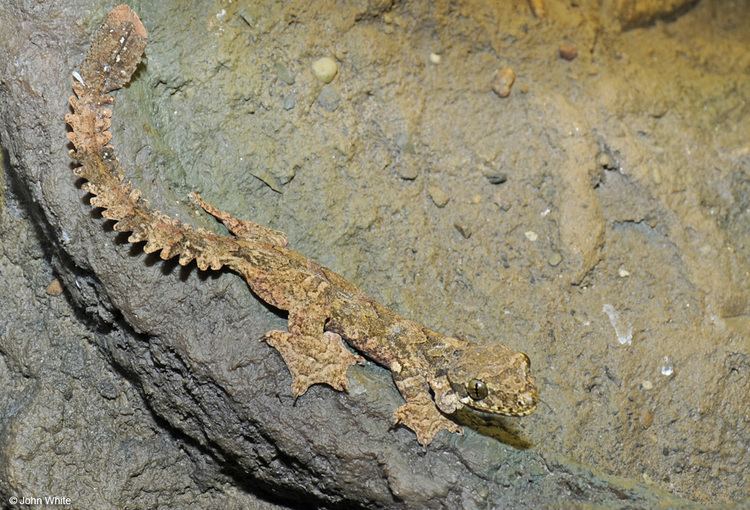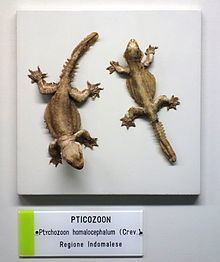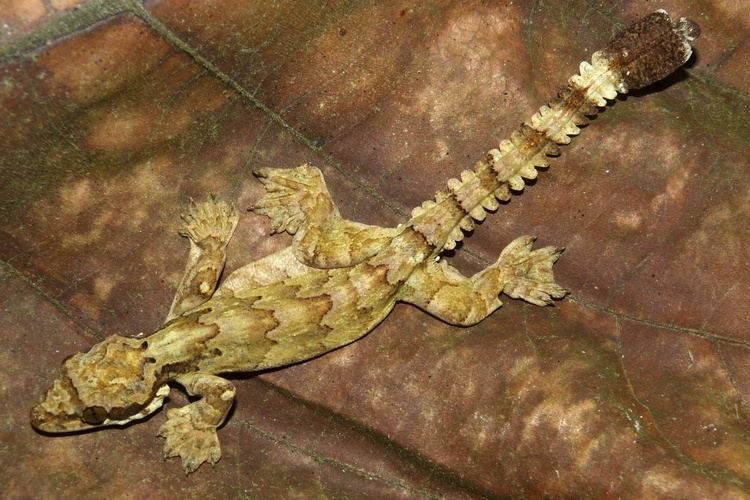Kingdom Animalia Suborder Sauria Family Gekkonidae Scientific name Ptychozoon kuhli Higher classification Flying geckos Order Scaled reptiles | Subphylum Vertebrata Infraorder Gekkota Genus Ptychozoon Phylum Chordata Rank Species | |
 | ||
Similar Flying geckos, Reptile, Geckos, Ptychozoon lionotum, Gekko vittatus | ||
Ptychozoon kuhli
Ptychozoon kuhli, commonly known as Kuhl's flying gecko or the common flying gecko, is a species of Asian gecko.
Contents
- Ptychozoon kuhli
- Gecko guy introducing the flying gecko ptychozoon kuhli
- Etymology
- Description
- Geographic range
- As pets
- References

Gecko guy introducing the flying gecko ptychozoon kuhli
Etymology
The specific name, kuhli, is in honor of German zoologist Heinrich Kuhl.
Description

P. kuhli has adaptations to its skin, including flaps on either side of its body, webbed feet, and a flattened tail to allow it to glide over short distances. These geckos have a remarkable camouflage. The flaps of skin along their sides help them blend with tree bark. Often, the eyes are the only way to see them.

Flying geckos, like many other gecko species, have evolved intricate toe pads with microscopic hairs that can adhere to nearly any surface, including glass.
Geographic range

P. kuhli is found in Southern Thailand (Nakhon Si Thammarat, Satun, Pattani), Myanmar, northeastern India, Malaysian Peninsula (incl. Pulau Tioman, Johor: Pulau Besar), Nicobar Islands, Indonesia (Sumatra, Java, Borneo, Simalur), and Singapore.
As pets
Flying geckos require among other things a 15-20 gallon terrarium and careful handling. They should be handled as little as possible, due to possible damage to their skin. Flying geckos are insectivorous. In captivity, they feed on crickets, mealworms, superworms and waxworms.
